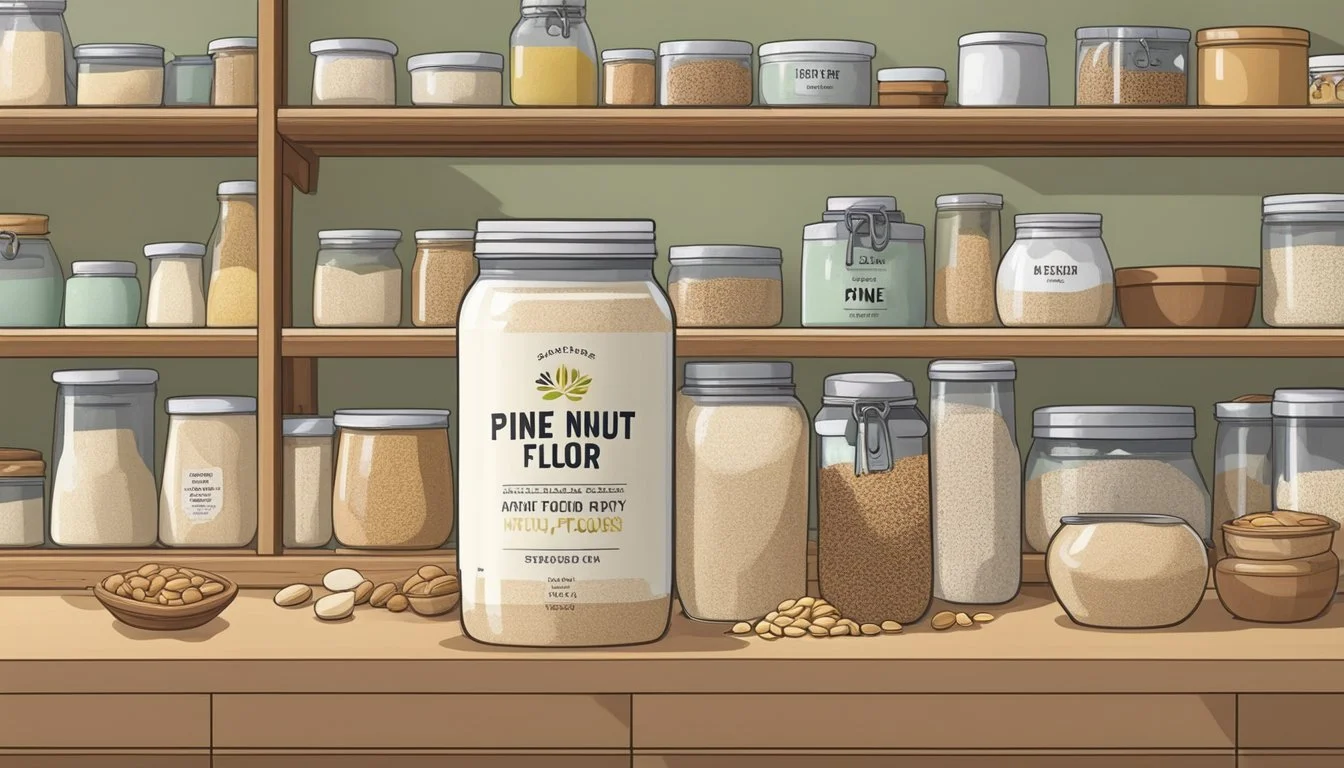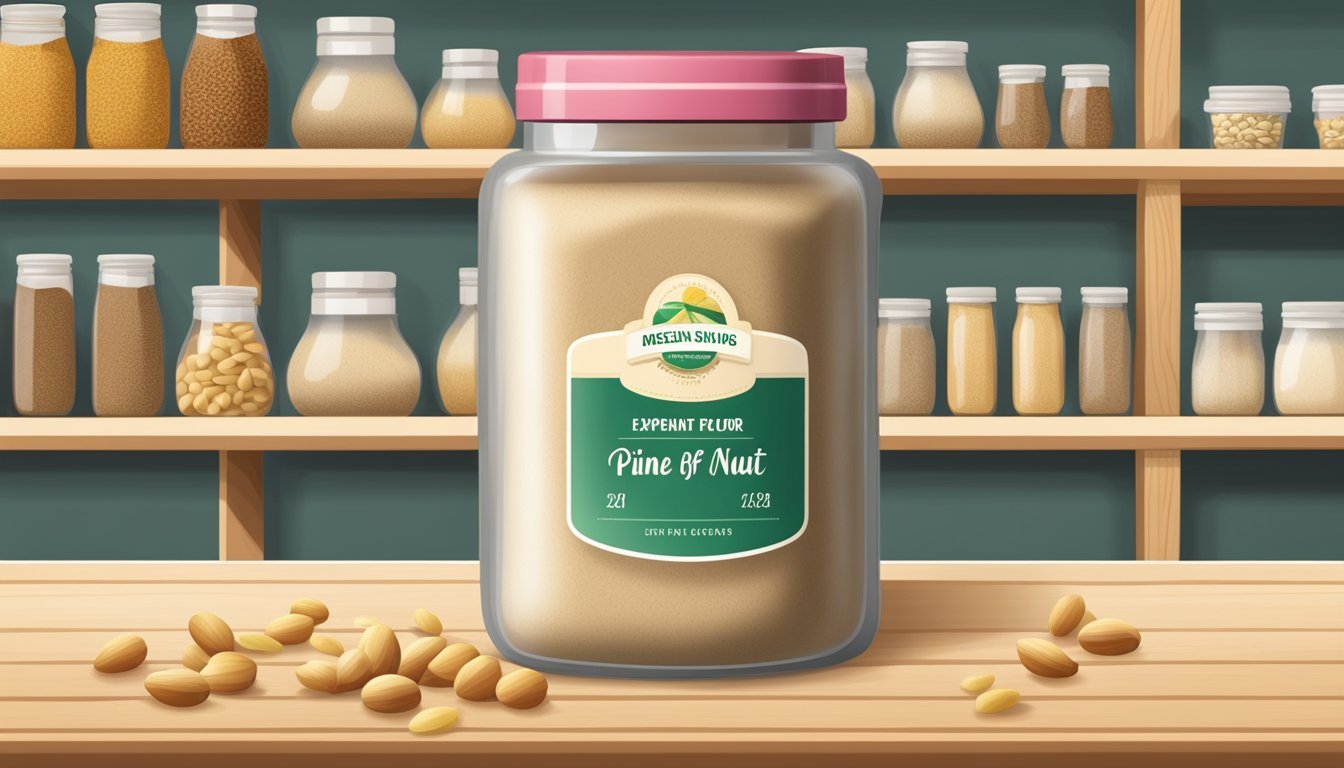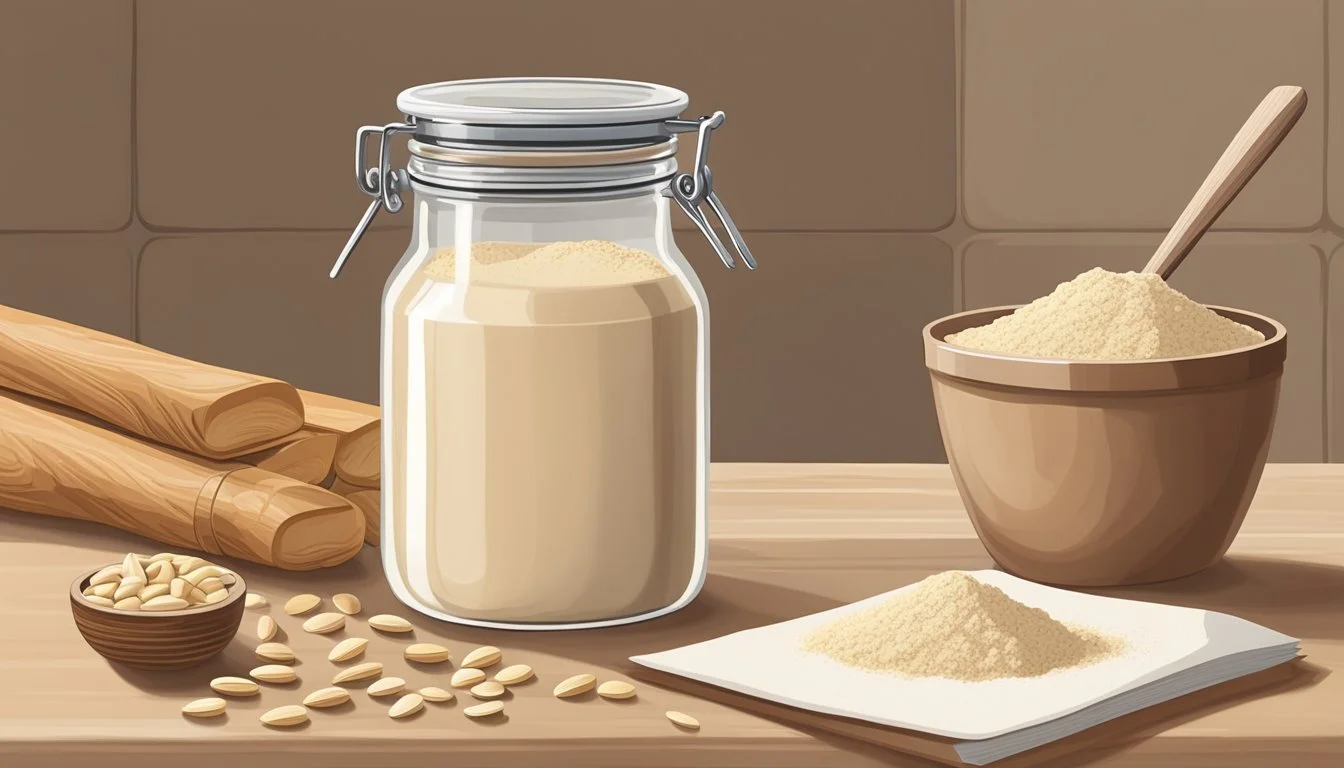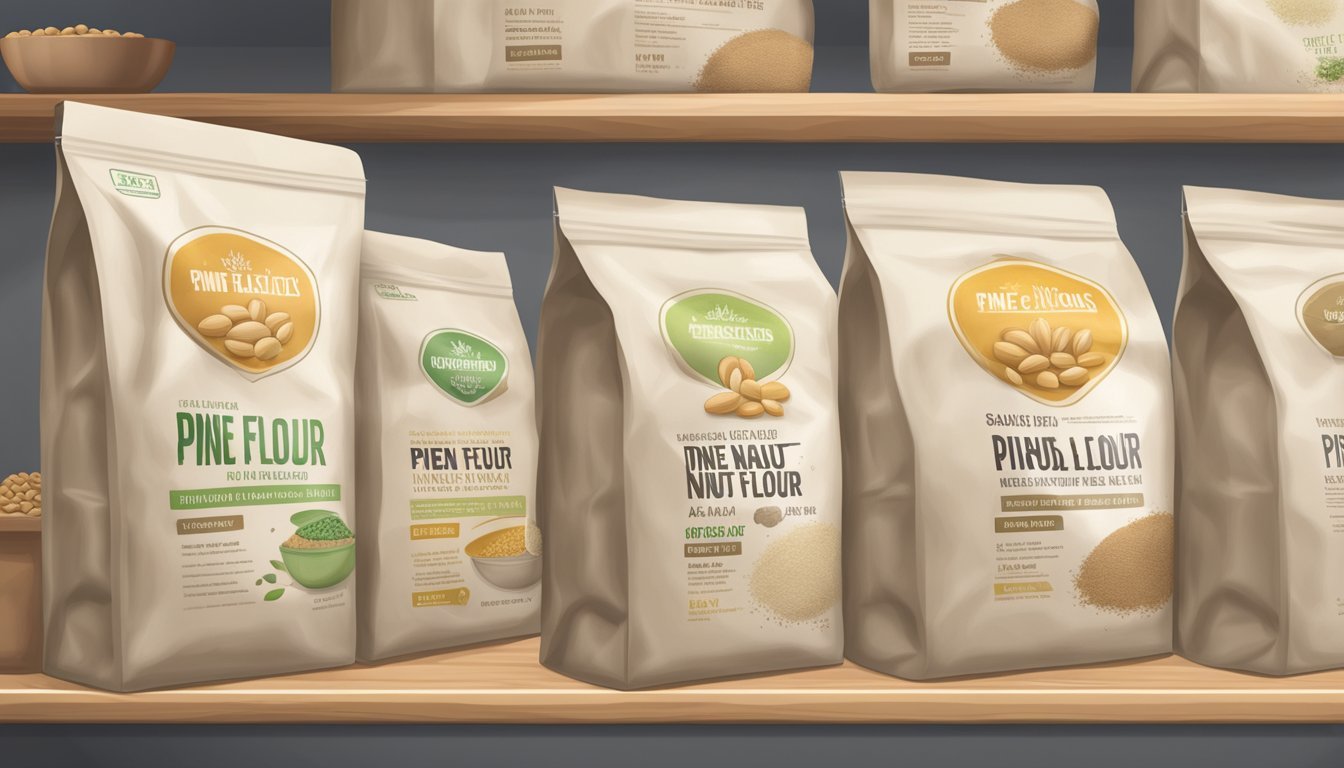How Long Does Pine Nut Flour Last?
Shelf Life and Storage Tips
Understanding the shelf life of pine nut flour is essential for maintaining its quality and ensuring food safety. Pine nut flour, derived from ground pine nuts, is a nutritious alternative to traditional wheat flours, offering a unique flavor and a boost of beneficial fatty acids. However, these same oils that enrich the flour with flavor and health benefits also make it more susceptible to spoilage.
Proper storage plays a crucial role in extending the longevity of pine nut flour. It should be kept in an airtight container to protect it from moisture and pests. To further preserve its freshness and prevent rancidity, refrigeration is recommended. This is especially important as pine nut flour does not contain preservatives that would otherwise prolong its shelf life at room temperature.
The expected shelf life of pine nut flour can vary, but in general, when stored correctly in a cool, dark, and dry place, it can last several months. Observing the flour for any changes in aroma, texture, or taste is key, as these factors can indicate spoilage. Nut flours like pine nut flour are particularly prone to developing a sour or off smell when they have gone bad, so sensory cues are a good indicator of freshness.
Nutritional Profile of Pine Nut Flour
Pine nut flour, derived from ground pine nuts, is a nutrient-dense ingredient. It has a subtle, nutty flavor and can be incorporated into a variety of dishes. Pine nuts, the primary component of this flour, are especially renowned for their high content of healthy fats, mainly polyunsaturated fatty acids.
Nutritional Breakdown (Per Ounce):
Calories: Approximately 190
Fat: 19g (predominantly polyunsaturated)
Protein: Roughly 4g
Carbohydrates: 3-4g
Fiber: Around 1g
Vitamins: E, K
Minerals: Magnesium, Zinc, Iron, Manganese
In terms of health benefits, pine nut flour boasts antioxidants from Vitamin E and provides a good source of vitamins such as vitamin K, which plays a role in blood clotting and bone health. The magnesium content in pine nuts supports muscle and nerve function as well as energy production. Zinc contributes to immune function and skin health, while iron is crucial for oxygen transport in the blood.
The fiber and protein content in this flour can help in keeping one satiated, thereby potentially aiding in weight management. Consuming it as part of a balanced diet may support cardiovascular health due to its healthy fat profile. Pine nut flour can be used for gluten-free baking, making it a beneficial alternative for those with gluten sensitivities or preferences.
This flour not only enriches the diet with essential nutrients but also adds a delicate, sweet flavor to baked goods, making it a versatile option in healthy cooking.
Shelf Life Basics
When assessing the shelf life of pine nut flour, it is crucial to consider various factors that can affect its freshness, understand how to identify signs of spoilage, and adhere to recommended expiration guidelines.
Factors Affecting Shelf Life
Storage Conditions: Pine nut flour's shelf life is significantly influenced by the way it is stored. To maximize longevity, store the flour in an airtight container away from heat, light, and moisture. These elements can accelerate spoilage and decrease the quality of the flour.
Temperature: Cooler temperatures are preferable; storing pine nut flour in the freezer can extend its shelf life up to a year.
Oil Content: High oil content in pine nuts can lead to quicker rancidity. Proper storage mitigates this risk.
Identifying Spoilage
Signs of spoilage include:
Odor: A rancid or funky smell indicates spoilage.
Taste: A bitter taste, different from the flour's natural mild sweetness, can signal that the flour has gone bad.
Visual Signs: Presence of mold or a change in color signifies that the pine nut flour should not be consumed.
Expiration Guidelines
Expiration dates on pine nut flour can give consumers an idea of the product's shelf life. However, it is more reliable to trust your senses along with storage practices to determine the actual freshness.
Expiration Date: Use expiration or best by dates on labels as a general guideline.
Shelf-Life: If stored properly, pine nut flour can last well beyond the printed expiration date, up to one year in the freezer.
Proper Storage Techniques
Proper storage of pine nut flour is integral to maintaining its freshness and nutritional value. By adhering to a few specific techniques, one can significantly extend the longevity of pine nut flour, whether it is unopened or after the package has been opened.
Unopened Packages
When pine nut flour is purchased from the supermarket in unopened packaging, it should be stored in a cool, dry place such as a pantry. The original packaging is typically sufficient to protect the flour from moisture and light until its use-by date. However, for added protection, placing the unopened package inside a glass, plastic, or metal airtight container can further shield the flour from any environmental variables.
Opened Packages
Once the package of pine nut flour is opened, it becomes more susceptible to spoilage. Immediate transfer of the flour into airtight containers is advised to minimize exposure to air and moisture. Refrigeration is recommended for opened pine nut flour to preserve its freshness; a zip-top bag or container with a secure seal works well for this purpose. Ensure to remove as much air as possible before sealing.
Long-Term Storage Options
For those looking to store pine nut flour over extended periods, freezing is the most effective method. Store the flour in a freezer bag or an air-tight container, label it with the date, and place it in the freezer. This will prevent the high-fat content of the pine nuts from turning rancid, which can occur quickly at room temperature.
Special Considerations for Pine Nut Flour
Pine nut flour, due to its higher fat content, requires more careful handling than other flours. It is sensitive to both temperature and moisture, so storing it in a refrigerated environment is ideal. In refrigeration, the flour can last several months, whereas freezing can extend its shelf life to a year or more. Always ensure the storage area is cool and dark, as strong light can also degrade the quality of the flour.
Impact of Storage on Quality
The quality of pine nut flour, like all nut flours, is highly dependent on storage conditions. Proper storage can significantly extend its freshness and preserve its characteristic nutty flavor and texture.
Flavor Preservation
Pine nut flour is prized for its delicate, nutty aroma, which is integral to its flavor profile. To maintain this:
Avoid exposure to air: Pine nut flour should be stored in an airtight container to prevent oxidation, which can dull the nutty aroma.
Consider toasting: For enthusiasts, lightly toasting pine nut flour before storage can enhance its flavor. However, it should be cooled completely and stored promptly.
Texture and Freshness
The texture of pine nut flour is important to its performance in recipes, and maintaining freshness is key to preventing a stale or spoiled product:
Freezer storage: It's recommended to store pine nut flour in the freezer where it can retain its freshness for up to 6 months.
Prevent freezer burn: Packaging it properly, with minimal air in the container, can prevent freezer burn, which adversely affects texture.
Using Pine Nut Flour in Recipes
Pine nut flour is recognized for lending a rich, nutty flavor to an array of recipes. From baked goods like cookies and muffins to savory items such as pesto and salads, this flour's versatility is notable. It serves as a gluten-free, protein-rich alternative to traditional flour.
Toast Before Use
To enhance the flavor of pine nut flour, it's often best to toast it slightly before incorporating it into recipes. A light toasting in the oven should be done at a low temperature, allowing the flour to become fragrant and golden without burning. After toasting, the flour should be allowed to cool before use.
Storage After Cooking
Baked goods made with pine nut flour should be stored properly to maintain freshness. Cookies, muffins, and other baked goods should be kept in an airtight container once they have cooled completely. This will extend their shelf life and preserve their texture and taste.
Incorporation Into Dishes
Pine nut flour can be integrated seamlessly into many dishes. Here are specific ways it can be used:
Cookies: When used in cookies, pine nut flour imparts a delicate flavor and richness.
Muffins: In muffins, the flour adds moisture and a subtle nutty essence.
Pesto: It can be used as a thickener in pesto, offering a hint of pine nut taste beyond what whole pine nuts provide.
Salad: A sprinkle of pine nut flour can add texture and flavor to salads.
Preventing Contamination and Infestation
To ensure pine nut flour remains uncontaminated and free from infestation, proper storage and vigilance are critical. It's important to monitor the environment where the flour is stored and use appropriate containers and sealing methods.
Containers and Sealing Methods
Choosing the right type of airtight containers is crucial for preserving the quality of pine nut flour, which is often used in recipes like pesto and salads. Glass, plastic, or metal containers with tight-fitting lids can effectively keep out moisture, air, and pests which could otherwise degrade the flour.
Recommended Container Materials:
Glass
Metal
Plastic
To further protect pine nut flour, particularly if not used frequently, consider refrigerating or freezing it. This not only prolongs the shelf life but also hinders the development of pantry pests.
Storage Temperature Options:
Refrigeration (short term)
Freezer (long term)
Signs of Infestation
Detecting early signs of infestation can safeguard not just pine nut flour but surrounding food items such as seeds, cashews, peanuts, walnuts, pistachios, and hazelnuts. A proactive approach helps maintain the safety and usability of these ingredients.
Visual Indicators of Infestation:
Live or dead insects inside the container
Larvae, webbing, or eggs in the flour
Unusual odors or mold growth
Regular inspection of your dry goods and maintaining clean storage practices are as vital as the correct containers to ensure infestation is identified and dealt with promptly.
Defrosting and Thawing Pine Nut Flour
When handling pine nut flour, it's important to manage its defrosting process with care. If pine nut flour has been frozen, defrosting it properly ensures its quality and texture remain intact for subsequent use. They should proceed with the following steps:
Transfer: Move the pine nut flour from freezer to refrigerator. This gradual thawing helps protect its structure.
Time: Allow the flour to slowly come to refrigerator temperature, which may take several hours.
For those who are short on time, they can opt for a quicker method:
Room Temperature: Place the pine nut flour on the counter at room temperature.
Spread Evenly: To expedite thawing, spread the flour out on a large plate or tray to increase the surface area exposed to warm air.
Interval Check: Check the flour every 15 minutes to ensure it is thawing evenly and to prevent any moisture build-up.
They should never attempt to defrost pine nut flour using a microwave or by applying direct heat, as this can alter the texture and potentially cook partially, causing it to clump and lose its fine consistency.
Once defrosted, pine nut flour is ready for usage. If one finds themselves with excess flour that won't be used immediately, it can be stored back in the freezer. Here, one should make sure it's hermetically sealed to avoid moisture and freezer burn. Freezing pine nut flour correctly can extend its shelf life significantly, making it a practical staple in the kitchen for future recipes.









